Te Waikoropūpū Springs

Beez Neez now Chy Whella
Big Bear and Pepe Millard
Mon 15 Sep 2014 22:57
|
Te Waikoropūpū
Springs
 Te
Waikoropūpū Springs was a very
special place to visit on our list, en route to Collingwood. Not far from the
main road we entered the car and this was what greeted us, the most lovely information ‘station’ yet. Richly coloured Māori carvings,
a big green touchstone and beautiful glass panels. This blog is from the Māori
spiritual angle.
The sacred, clear, fresh waters
of Te Waikoropūpū are said
to be healing waters, used by tōhunga around the motu in
ceremonies.
The carvings on the Pou – posts, of
this wharenui represent many significant wahine figures in Māori mythology,
interwoven with their own respected wāhine toa – women of strength and
leadership. The legends and roles of wahine have been depicted in the Te Ao
Māori – the beautiful Papatūānuku the earth mother; Hine Ahu One the first
mother of the land; Hine Titama the dawn maiden; Hine Nui Te Pō the great lady
of the night; Hine Tū Ahoanga kaitiaki of Mōhua and of sandstone; Hine Huriawa
kaitiaki taniwha of Te
Waikoropūpū;
Hine Waikoropūpū the
keeper of all springs water; Hine Te Iwaiwa kaitiaki of birth and rebirth; Hine
Pūkohurangi the great ancestress of all states of water; Hine Kōrako the keeper
of springs and water; Hine Mania kaitiaki of the river plains; Hine Moana
kaitiaki of the tides; Matariki representing the Māori New Year; and the sisters
Raukatauri and Raukatamea, kaitiaki of music, games and
dancing.
The kaitaikitanga – guardianship, of Te Waikoropūpū is a taonga tuku
ihi – a treasure from these ancestors, passed down from generation to
generation,to protect and ensure that the matauranga – knowledge and legends,
and ahora – love, of the sacred place is not
lost.
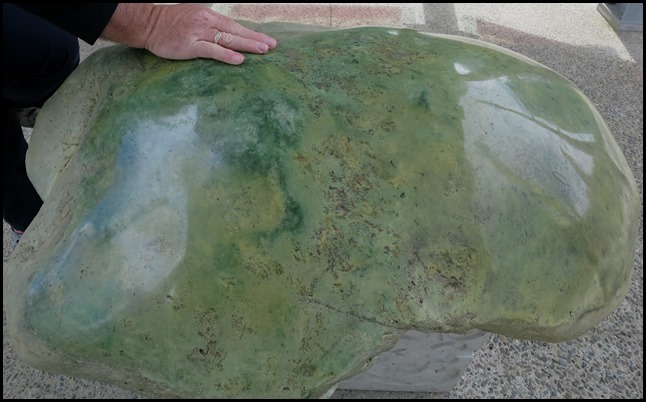 The green kōhatu
– stone, in the centre of the wharenui symbolises the Mana and Kaitiaki
role of Manawhenua Ki Mōhua and was sourced from the Awa of the sacred Parapara
maunga. Green is the symbolic female colour and relates to the pounamu of Te Tai
Poutini. Pounamu is a stone of significant for Te
Waikoropūpū. At the time of the signing of the Treaty of Waitangi, Manawhenua
Iwi controlled the Pounamu – greenstone Trials and to this day they control
Mōhua. Pounamu is the
opposite of sandstone. Sandstone is seen as an enemy of pounamu because it can
grind pounamu down. Yet grinding pounamu reveals its inner beauty. In a parallel
way, water has worn away the subterranean world of passages that lead to and
from Te Waikoropūpū Springs.
 The Legend of Kokowai: Kokowai, the tapu red stone, is located on Parapara maunga –
Parapara Peak in Mōhua – Golden Bay. It is said that when Ranginui – Sky Father
and Papatūānuku – Earth Mother were separated by Tāne and his brothers,
Ranginui’s arms and wrists were torn. The blood from his wounds dripped down
onto Papatūānuku and this formed kokowai. Tāne created the first woman Hine Ahu
One out of this sacred stone, and she became known as the first Mother of the
land.
Kokowai was seen as the protector
stone, ground up and mixed with oil to become deep red paint and used to cover
and protect buildings, clothing and people. It is a source highly prized by
chiefs and tohunga for its sacred red-ochre colour and used in special
ceremonies. The bloodthirsty taniwha, Te Kaiwhakaruaki, was assigned to protect
and guard the kokowai that is found in the Parapara inlet and Parapara maunga.
Te Kaiwhakaruaki was defeated when warriors scared him by throwing a red stain
of ground kokowai over the water then killing him with their
weapons.
  Te Waikoropūpū Springs Wai
Ora – Water of Life.
Life cannot survive without wai –
water. For Manawhenua Ki Mōhua, water is the source of all life and the
waterways carry the lifeblood of the land. Manawhenua iwi believe that all things including people are
descendants from ngā atua kaitiaki – the spiritual guardians and therefore have
their own mauri or life-force. The atua kaitiaki are at the centre of all iwi
relationships. These guardians are responsible for all aspects of life,
including the health and wellbeing of the people. The interrelationship of Māori mythology, the natural world and ngā
tangata Māori are intertwined through whakapapa – genealogy and reflects the
spiritual connection between Te Waikoropūpū and Manawhenua. The
waters of Te Waikoropūpū represent the lifeblood of Papatūānuku – Earth Mother
and the tears of Ranginui – Sky Father.
  Waikoropūpū
Waikoropūpū
Pūpū ake te
whenua
Pūpū aka ko
nga wairoa waikoropupu
Ngā puna wai o Takaka
Ngā puna roimata wairua
Waikoropūpū, Waikoropūpū
Bubbling
waters from the throat of the spring Bubbling waters from the throat of the spring
Forever
bubbling from the land
Forever
bubbling for the health of the people and the spring waters
The spring
waters of Takaka
The tears of
the spirit ancestors
Bubbling waters from the throat of the
spring. Bubbling waters from the throat of the
spring
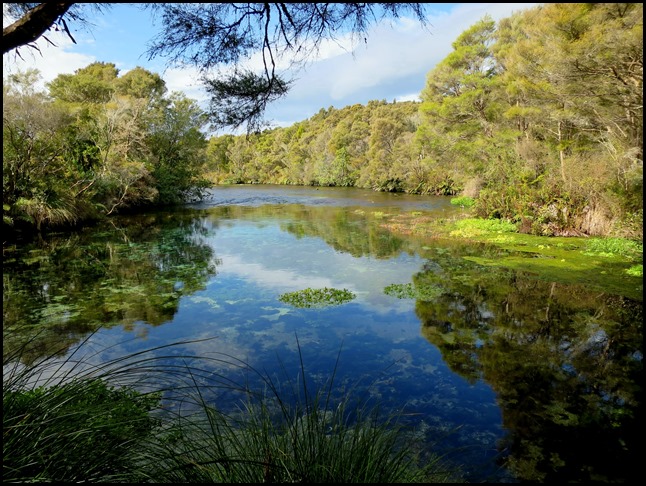 The Sacred Home of Huriawa.
Kia tupato ki a Huriawa! – Be mindful
of Huriawa!
Kia rangimarie ki a koutou katoa ki
tenei Wahi Tapu – Be peaceful in this sacred place.
 To Manawhenua Ki
Mōhua, Te Waikoropūpū Springs is the playground of the kaitiaki taniwha or
protective guardian ‘Huriawa’. Why is Te Waikoropūpū so sacred? The catchments
and waterways of Te Waikoropūpū stretch for miles both underground and far out
into Te Tai Tapu – Golden Bay. The underground caverns are made of sandstone.
This is the domain of Hine Tū Ahoanga – the ancestress of stone, who also
presides over the prow of the Waka Uruāo of the great explorer Rākaihautu, which
was placed ceremoniously at the mouth of the Waitapu River, once named Ngā
Waitapu o Uruāo.
Rākaihautu called forth
Huriawa the kaitiaki taniwha – protective guardian from her resting place on
Parapara Maunga. Huriawa is well known for her bravery, her wisdom and her
gentle nature, and she was placed to guard and protect the prow of the waka and
be caretaker of the myriad of waterways.
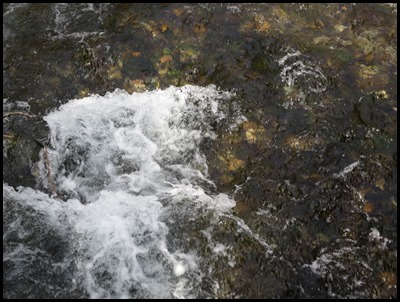 Huriawa uses her special
powers to dive deep into the land and sea to clear the many underwater caverns
made of sandstone. Atop the land she tosses fallen trees and tangled vegetation
from rivers to free the flow. She warns of earthquake danger when Ruaumoko turns Papatūānuku, by sending messages through
the surge and lift of the waters. Huriawa travels out to sea where the clear
waters rise up and bubble at the surface. She reaches all the waters touched by
sandstone and travels to the deepest caverns in the very centre of the waka.
Huriawa’s children rest here and help care for the place while the taniwha is
off on her protective travels.
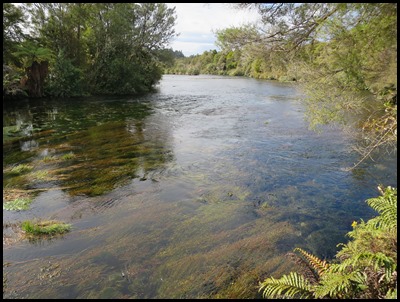 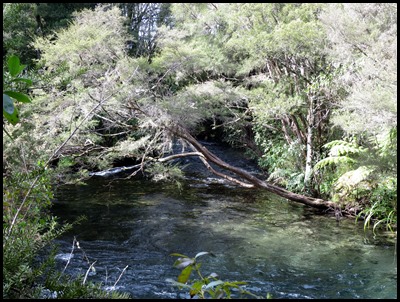 The Māori “See the springs as part of
the wider system of the Takaka River catchment – everything from the underground
source to the sea, all the small tributaries and all the springs that bubble up
into the ocean. Because the physical and the spiritual are inseparable, the
health of the whole system reflects the well-being of our
community”.
The spiritual and physical
survival of all things is dependent on the maintenance of the mauri – life
force, wairua – spirit, mana – power and tapu – sacredness of wai. Water has
different qualities and Te
Waikoropūpū Springs falls into the category of wai ora – water of
life.
Wai Ora is the purest form of
freshwater. It gives and sustains life, can rejuvenate damaged mauri – life
force and counteract evil. The waters of Te Waikoropūpū were used by tūpuna – ancestors
for cleansing and spiritual
healing.
“We view the springs and the tracks
leading to them as marae. There is respect and ceremony around visiting this
place. It is part of our tradition that we take forward into the future to
maintain the continuity of life”.
  Ka hikoi
tatou ki whakapono me te Aroha ki te rangimere – May you journey with Faith,
Peace and Love.
ALL IN ALL A VERY SACRED
PLACE TO VISIT
YOU CAN FEEL YOU ARE IN A SPECIAL
PLACE
|